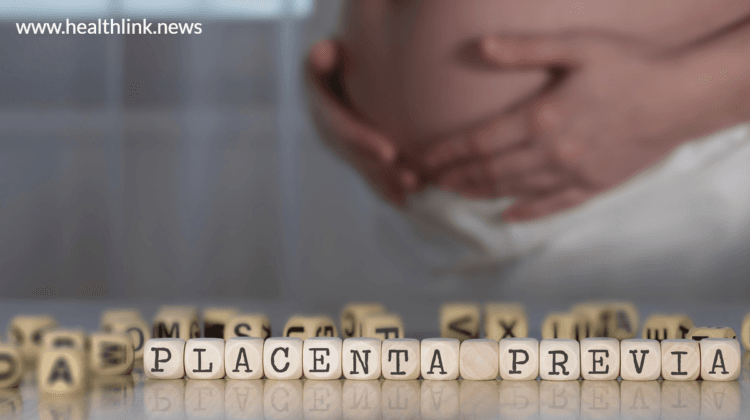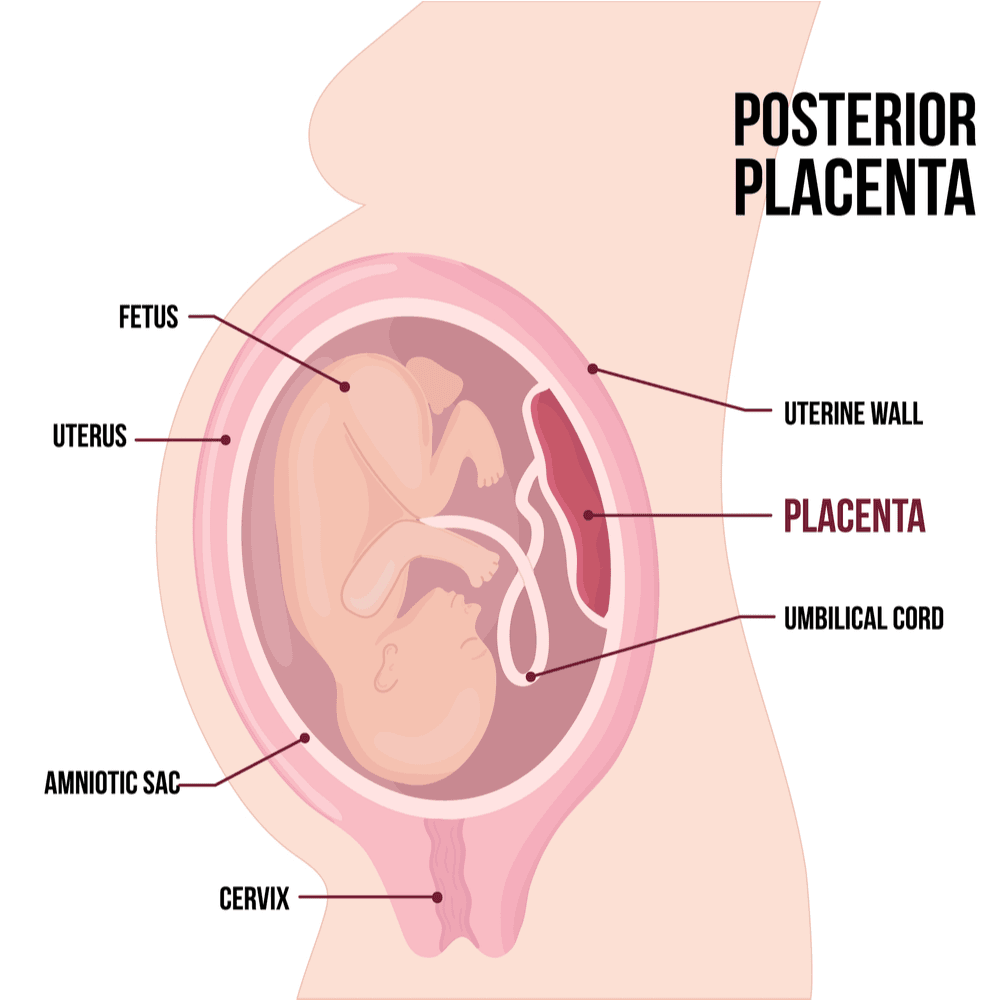What is Placenta Previa and How does it Affect Pregnant Women?

When you become pregnant and you know that a baby is growing inside your womb, there is a sac-like organ that forms a protective layer that covers and protects the baby till the moment of its birth. According to medical terms, this external protective layer is known as Placenta. This placenta is a unique organ that develops when you are pregnant. As it develops surrounding your child, it not only provides necessary nourishment to your baby but also protects it from any kind of injury. In most cases, it attaches mainly to the top or lateral portions of the mother’s uterus and thus the baby remains attached to the placenta through the umbilical cord that connects the baby’s digestive system to that of the mother’s. After the baby is born, the placenta also comes out with it.
Sometimes an abnormal condition might occur during your pregnancy, particularly during the end weeks of your maternity, when you might notice some mild to severe bleeding from the vagina, which may also occur before or during childbirth. This happens because the placenta is now covering the opening of the cervical region, the opening section of the woman’s uterus. This abnormal condition eventually leads to placenta previa and such an abnormality can cause fatal damage to your baby and can cause further complications in your pregnancy. So when you are pregnant or if you are planning for a child, you should know about placenta previa and the related complications and risk factors in detail so that you can take good care of both your child and also your health.
What Is All About Placenta Previa?

When your child is growing inside your uterus during your pregnancy, the placenta develops outside the uterus. The placenta effectively helps to provide nutrition, food, and oxygen to the developing baby and also helps to purify the blood of the growing baby by clearing out all the toxic substances from its body. During the early months of pregnancy, the placenta remains below the uterus. But as you come closer to the date of your labor, it may occur that with the gradual stretching and growth of the uterus with the gradual advancement of your pregnancy, almost during your third trimester, a portion of the uterine wall may lead to an opening in the cervical region as a part of it that was attached to the placenta might move. This can cause placenta previa. Thus, when the placenta covers the opening of the cervical region at the end of pregnancy or in the third trimester, it is known as placenta previa. The cervical region leads to the opening of vaginal labor and childbirth which sometimes gets affected due to the occurrence of placenta previa during pregnancy.
When the placenta gets stuck to the lower portion of the uterus, then a major portion of the entire cervical region may get covered which can lead to major difficulties. Ideally, by the third trimester of your pregnancy, the placenta should remain above or near the top of the uterus which will effectively help in easy labor and childbirth. If the position gets disturbed, placenta previa may occur.
Placenta previa happens when the placenta or the external sac of the developing baby covers the mother’s cervix partially or fully and it is a damaging condition during pregnancy this might be treated if the patient gets enough rest in her pelvic region that can be achieved by limiting or avoiding excessive sexual intercourse, any condition such as gynecological check for dilation, or any exercise or works- out that involves exertion of pain and stress in your pelvic region.
What Happens If You Have Placenta Previa?

During labor and childbirth, your cervix opens and makes way for the delivery of the child. If you have placenta previa, the blood veins and vessels that are attached to the uterus with the placenta undergo extreme pressure during childbirth and so they may eventually tear apart and thus can cause profuse bleeding in this situation both the mother and the child can be in life risks and in great danger. In this troubling condition, your registered doctor might prescribe you to give birth to your child through Caesarean procedures.
Placenta previa can lead to many complications that depend on the type of placenta previa you are having. The two most common types of placenta previa are as follows:
- Complete previa: When the entire opening of the cervix is completely covered by placenta.
- Marginal previa: Marginal previa or low- lying placenta occurs when the placenta very much near the cervical opening but it is not fully covered.
Symptoms Of Placenta Previa
The primary symptom that starts to appear among those who suffer from placenta previa is sudden mild to heavy vaginal bleeding. Some may confuse this bleeding as a symptom of miscarriage, but placenta previa can make you bleed profusely. Apart from these, there are some other symptoms of placenta previa that might be noticeable after the third trimester or during the closing weeks of your pregnancy. Some such symptoms are as follows:
- Abdominal cramps and pain.
- Excessive pain in the back, pelvic region, and lower back pain.
- Bleeding from the vagina after performing sexual intercourse.
- Contractions and bleeding that occur along with the cramps.
- Vaginal bleeding in the second phase or at the end of pregnancy may or may not be accompanied by pain.
- Anemia, lack of hemoglobin, and loss of iron in the blood that results from heavy vaginal bleeding, further leading to dullness of skin, nails, and eyes.
- Excessive palpitations, decrease in the levels of blood pressure, high heart rates and breathlessness.
- Excessive bleeding from the vagina increased frequencies that occur in alternate days or weeks.
Risk Factors Related To Placenta Previa:
Placenta previa does not happen commonly and it is a rare case in pregnancy. But if anyone gets affected by placenta previa, the condition might get even worse as you might get into certain risk factors related to it. Some of them are listed below:
- If you have an advanced stage pregnancy at an age of 35, 40 years or even older.
- If you have a practice of having excessive drugs, drinking alcohol, or profuse smoking.
- Excessive consumption of coffee or similar food items and beverages that contain caffeine.
- If you had a Caesarean childbirth in your earlier pregnancies.
- If you had any ovarian or uterine surgery before pregnancy for removing uterine fibroids or dilation.
- In case of multiple pregnancies, that is, if you are pregnant with twins or triplets.
- If you had suffered a miscarriage before.
- Large size of your placenta.
- Abnormality in the shape and size of your uterus.
- Abnormality in the position of the growing fetus, particularly in a transverse position.
- If you had placenta previa in your previous pregnancy/ pregnancies.
If you really feel that you might be in the above risk factors, it is highly recommended that you should consult your health care expert at once.
Possible Diagnosis Techniques Of Placenta Previa:
If you have placenta previa, in many cases the placenta will have a tendency to correct the abnormality on its own. But in many cases, external medications and proper diagnosis are required. You will notice the early symptoms of placenta previa in the latter part of your pregnancy if you undergo an ultrasound in the 20th week of your pregnancy. The treatment of placenta previa depends on a few factors in the body of the mother-to-be. Some such factors are listed below:
- The month or in which phase of pregnancy you are in
- The health and stability of your child
- The alignment of the baby
- Your estimated due date
- Position of the baby with respect to the placental sac
- Amount of vaginal bleeding you have experienced
In fact, a lot can be predicted by the amount of bleeding. How much you have bled due to placenta previa will help your health care expert to go through the necessary diagnosis and treatments.
The possible treatments and diagnoses that doctors often refer to in case of healing abnormalities like placenta previa are as follows:
- Trans- vaginal ultrasound: The concerned health care expert will undergo an ultrasound to get the clear pictures of your vagina and the intensity of placenta previa.
- Trans- abdominal ultrasound: An instrument called transducer will be used to get the images of your abdomen and the child to initiate the treatment of placenta previa.
- MRI (magnetic resonance imaging): This is a very effective method to get a detailed picture of the placenta, the uterus and the baby and the doctor can start treatments accordingly.
Complications Related To Placenta Previa:
Placenta previa in some cases can lead to extremely worse conditions of the pregnancy and can increase complications related to the health of the child and the mother. Some such complications can be listed as follows:
- Vaginal bleeding: Apart from the vaginal bleeding that occurred during pregnancy, mild to excessive bleeding can occur during labor due to tearing of blood vessels in the placenta and the uterine wall and thus can affect child birth
- Premature birth: Placenta previa can increase the chances of premature birth or even still births. In this case the doctor might prescribe an emergency C- section surgery.
